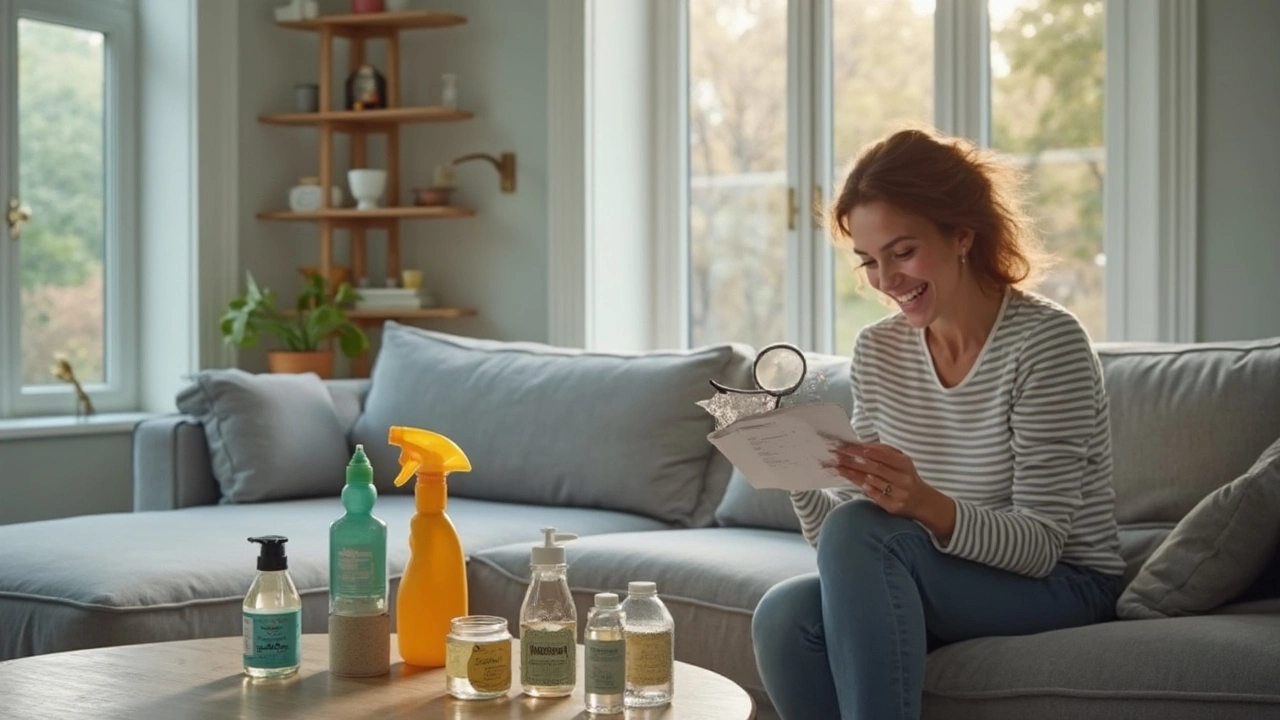Sofa Stains – Quick Fixes and When to Call a Pro
Got a coffee ring, a pet accident, or a mystery mark on your favorite couch? You’re not alone. Most families deal with sofa stains at least once a year, and doing the right thing the first time can save you hours of re‑cleaning and protect the fabric.
Below you’ll find the most common stain types, a handful of DIY recipes that actually work, and the signs that a professional clean is worth the extra spend. Let’s get that sofa looking like new again.
Common Sofa Stains and How They Form
Food and drink spills – Coffee, tea, wine, or greasy pizza sauce can seep into the weave. The sugar and oil in these liquids create a sticky surface that attracts more dirt.
Pet accidents – Urine and pet hair leave both odor and discoloration. The ammonia in urine can break down fabric fibers if not treated quickly.
Ink and marker marks – Ink pigments sit on top of the fibers, making them hard to lift with water alone.
Grease and oil – Cooking oil or skin oils create a slick film that repels water, so a regular damp cloth won’t do much.
Knowing the source helps you pick the right cleaner. Water works for most spills, but oil‑based stains need something that can cut grease, and protein‑based stains (like blood or milk) need an enzymatic approach.
Easy DIY Solutions and Pro Tips
Here are three simple recipes you can mix at home. Test each on an inconspicuous spot first to make sure the color doesn’t bleed.
1. Baking soda & vinegar spray – Mix 1 cup warm water, 1 tsp baking soda, and 1 tsp white vinegar in a spray bottle. Lightly mist the stained area, let it fizz for a minute, then blot with a clean cloth. Great for coffee and mild food stains.
2. Dish soap & hydrogen peroxide blend – Combine ½ cup 3% hydrogen peroxide, 1 tsp gentle dish soap, and a few drops of lemon essential oil (optional for scent). Apply with a soft brush, work in circles, then rinse with a damp cloth. This tackles grease and oily spots without harsh chemicals.
3. Enzyme cleaner for pet stains – If you have an enzymatic cleaner (like a pet‑specific product), follow the label: saturate the area, let it sit for 10‑15 minutes so the enzymes break down the urine proteins, then blot dry. If you don’t have a commercial enzyme cleaner, you can make one with diluted white vinegar and a pinch of baking soda, but commercial versions work faster.
When you’re uncertain, remember the advice from our post “What Should Not Be Done When Cleaning Upholstered Furniture.” Avoid over‑wetting, never use bleach on colored fabrics, and skip harsh scrubbing that can damage the weave.
If a stain refuses to budge after three attempts, it’s probably time to call in the pros. Professional cleaners have hot‑water extraction machines that push out deep‑set grime and can treat delicate fabrics safely. Our article “Why Does My Couch Look Worse After Cleaning?” explains why a professional finish can look cleaner than any DIY effort.
Finally, keep a small cleaning kit handy: a spray bottle, a soft microfiber cloth, and a gentle brush. Tackle spills while they’re still wet, and you’ll prevent most stains from setting in the first place.
With the right quick actions, a few household ingredients, and the occasional professional help, your sofa can stay fresh for years. Got a stubborn spot? Try one of the DIY mixes above, and if it still lingers, book a professional clean for that deep‑set rescue.

Best Couch Cleaner: How to Choose the Right Upholstery Cleaner
Trying to find the best cleaner for your couch? This guide sorts through sprays, foams, and homemade solutions, showing which cleaners work for different couch types. Find out how to read cleaning tags, dodge common mistakes, and tackle common stains. We also share quick tips for keeping your sofa looking and smelling good. Make your next couch-cleaning session less stressful and more effective.
Read More